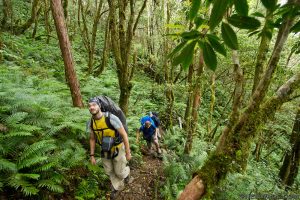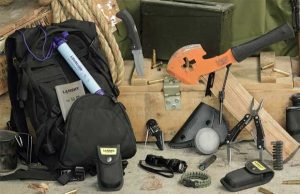
Before prepping and survival became mainstream in modern America, settlers in the 1800s were already bugging out during the westward expansion of the country.
Here are nine bug-out lessons modern preppers should keep in mind before disaster strikes and you need to evacuate. (h/t to Survivopedia.com)
Why did people bug out in the 1800s?
In the past, people didn't bug out just because of natural disasters. Sometimes, people migrated due to a lack of economic opportunity. The westward expansion of the United States in the 1800s involved many ordinary people taking risks to search for a better life.
The idea of free land out west, offered through the Homestead Act of 1862, motivated many Americans to uproot their lives and go on long, perilous journeys to a land where the right to vote only belonged to property owners.
While about four million people filed homestead claims, only 1.6 million deeds were issued to those who met the requirements to have the land they claimed deeded to them by the government. Others who migrated west didn't stake a land claim. About three million more people moved west as pioneers. Instead, they bought land from the railroad or a lot in a new town.
These groups traveled in "wagon trains" and everyone cooperated to ensure the survival of their group. A typical train included at least 30 to 200 wagons, with more than 12,000 cattle and sheep.
Detailed below are nine useful bug-out lessons from the past that can help modern preppers.

Settlers sought safety in groups
Even in the past, settlers knew there was safety in numbers. While traveling alone means you can get to your destination faster, when bugging out, you will need to rely on your family and friends so you can protect each other. Before SHTF, teach your family that you can all survive while bugging out by dividing tasks and looking out for each other. If you are willing to travel with a larger group when it's time to bug out, look for members who have useful survival skills.
Settlers traveled with a trusted guide
Every wagon train had at least one guide, usually a professional who had experience taking other trains west. Guides were often former mountain men who had spent years in the Rockies, with knowledge of the trail and wilderness survival. Guides also became the teacher of pioneers by showing them various survival skills.
For modern preppers, your guide could be someone who is familiar with the route from your home to your ultimate destination. Your guide should also know of alternate routes and accessible sources of supplies along the way.
Settlers traveled with a clear destination
Settlers who set out on the wagon trails had one destination in mind: Oregon, California, or somewhere along the way. While settlers were chasing a dream, they always had the details in mind.
As a prepper, you should also have the same mindset. When SHTF, bug out with a goal in mind since you can't afford to be wishy-washy during a survival scenario. (Related: Fifteen HARD lessons I learned from the “Texageddon” blackouts and collapse of critical infrastructure.)
Once you have your bug-out bags (BOBs) packed, your bug-out vehicles prepped and ready, find a safe route to your destination. Don't scramble to look for a hideout on the day you have to evacuate.
Settlers customized their wagons
Settlers customized their wagons before heading to their destinations. They would build cabinets on the inside to store things and there would be at least one water barrel strapped to the outside of a wagon.
Settlers also utilized the space under the wagon by adding a canvas hammock that would store wood and cow chips for fires along with a hook to hang a bucket for churning milk into butter. Do the same with your bug-out vehicle before SHTF so you're ready for whatever obstacle you may face while bugging out.

Settlers utilized limited space in their wagons for carrying supplies
Wagons had limited space that was reserved for carrying supplies. If there wasn't enough space in the wagon for the family to ride, settlers would walk instead. There also wasn't enough space for the family to sleep inside the wagons so they either slept in tents or on the ground under tents.
While prepping your bug-out car, make sure it's roomy enough for all your passengers and your supplies. If possible, bring tents so you can utilize the space in your vehicle for your gear and provisions.
Settlers traveled self-sufficiently
Settlers didn't have access to malls or grocery stores so they had to be self-sufficient. Until they established a community large enough to attract shipping companies or the railroad, they would only have access to the supplies they brought with them, what they harvested from nature or items they made themselves.
If you're bugging out, you will face the same situation. You need to be self-sufficient and learn how to forage, grow, or make supplies that you will need when SHTF.
Settlers made the most of their supplies
Settlers on wagon trains made the most of what had. Instead of throwing things away, they repurposed every scrap and packaging so nothing went to waste. Change your wasteful mindset and learn how to repurpose items from your supplies.
Here are some useful items you can repurpose at your bug-out location:
- Turn aluminum cans into a mini-rocket stove.
- Use cardboard boxes as insulation when sleeping outdoors.
- Cardboard juice cartons can be cleaned and used to create a food storage rotation system.
- Cut plastic garbage bags or shopping bags into strips and braid them to make sturdy cordage.
- Plastic two-liter bottles can be used to store water, dry food like corn and pasta, or turned into a makeshift broom.
Settlers only took what they needed
Settlers had to prioritize their luggage because there was only enough space for essentials.
Can you do the same when SHTF and you need to bug out? Or are your BOBs full of things you just want but don't really need?
Keep your BOB light and manageable so you won't have a hard time if you need to travel by foot when you're bugging out.

Settlers were prepared to start a homestead at their destination
Before settlers traveled to their destination, they were ready to work hard to start their homestead. Despite the limited space in their wagons, they brought the supplies they needed to build homes, plant crops and establish their homesteads.
You should do the same for your BOBs. Pack tools in your bug-out car so you can build a sturdy shelter if you have to.
Prep your gear and learn from early settlers who traveled in groups and learned how to be self-sufficient before it was time to bug out.
Sources include:
Please contact us for more information.














